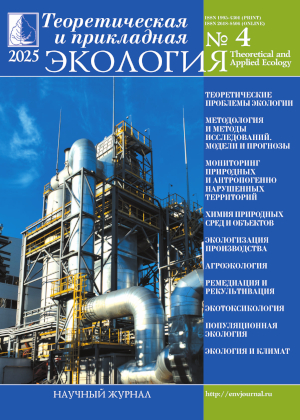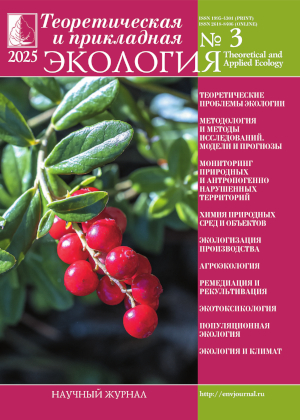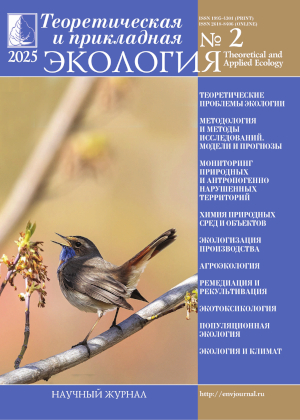 ISSN 1995-4301
ISSN 1995-4301(Print)
ISSN 2618-8406
(Online)
Online version of the journal
|
Macro- and microelemental composition and properties specificity of Cambisols of plain and mountain landscapes of Russia |
||||
| G.V. Nesteruk, T.M. Minkina, Yu.A. Fedorov, O.S. Bezuglova, L.Yu. Goncharova, D.G. Nevidomskaya, Yu.A. Litvinov | ||||
| Section: Monitoring of natural and anthropogenically disturbed areas |
||||
| The role of Cambisol soil microparticles as possible storage of heavy metals able to mass-transfer in the Azov sea – Black sea basin and the Baltic sea basin environments was studied. The physical and chemical properties of soils, content and distribution features of elements in soil profiles have been defined. The studied soils are in the mountain (Caucasian Natural Reserve) and plain (Polistovsky Natural Reserve) soil-forming conditions. In mountainous territory the higher content of trace elements Pb, As, Cu, Co, Zn, V and macroelements were set up, and enhanced microelemental values in textural horizon and parent rock were defined. The influence of parent rock and particle size distribution on elemental accumulation and allocation within the profiles of studied soils have been observed. In soils of the plain territory the lithological heterogeneity of soil profiles with the elemental value increasing in underlying deposits were indicated. In the mountain area the significance of the relief for the character of profile distribution of elements was set up. It was diagnosed more marked transformation of primary minerals in the brown forest soils of the mountainous territory, and the movement of silty particles without the mineral mass changing in ones of the plain. The obtained content of Ni, Cu, Zn, As, Pb, Cr, Mn, Co, Sr, V in the studied soil could be used to define these ingredients regional background values and levels of their emission as a result of the water and wind erosion. The clarks of concentration and clarks of dispersion of elements were calculated and the geochemical specters were constructed. | ||||
| Keywords: burozems, particle size, micro- and macroelements, content, distribution |
||||
| Link | ||||
  |
||||
| Article published in number 1 for 2022 DOI: 10.25750/1995-4301-2022-1-070-077 |
||||
|
|
36, Moskovskya street, Kirov, 610000, Editorial Board "Theoretical and Applied Ecology." Phone/fax: (8332) 37-02-77 e-mail: envjournal@vyatsu.ru The journal was founded in 2007 |
||||||




 Select viewing options
Select viewing options